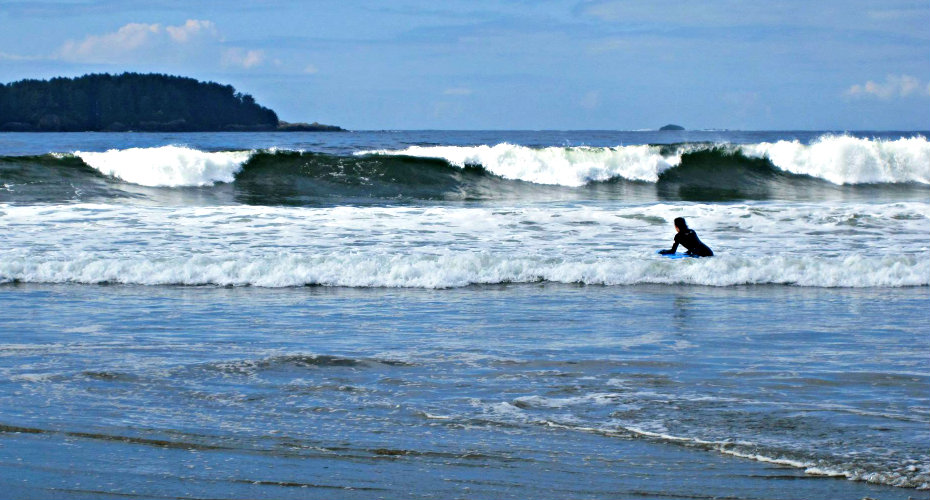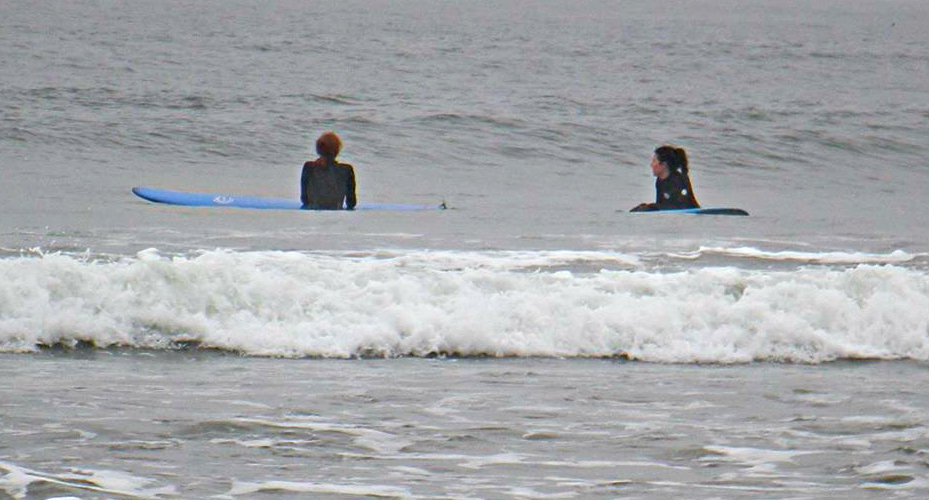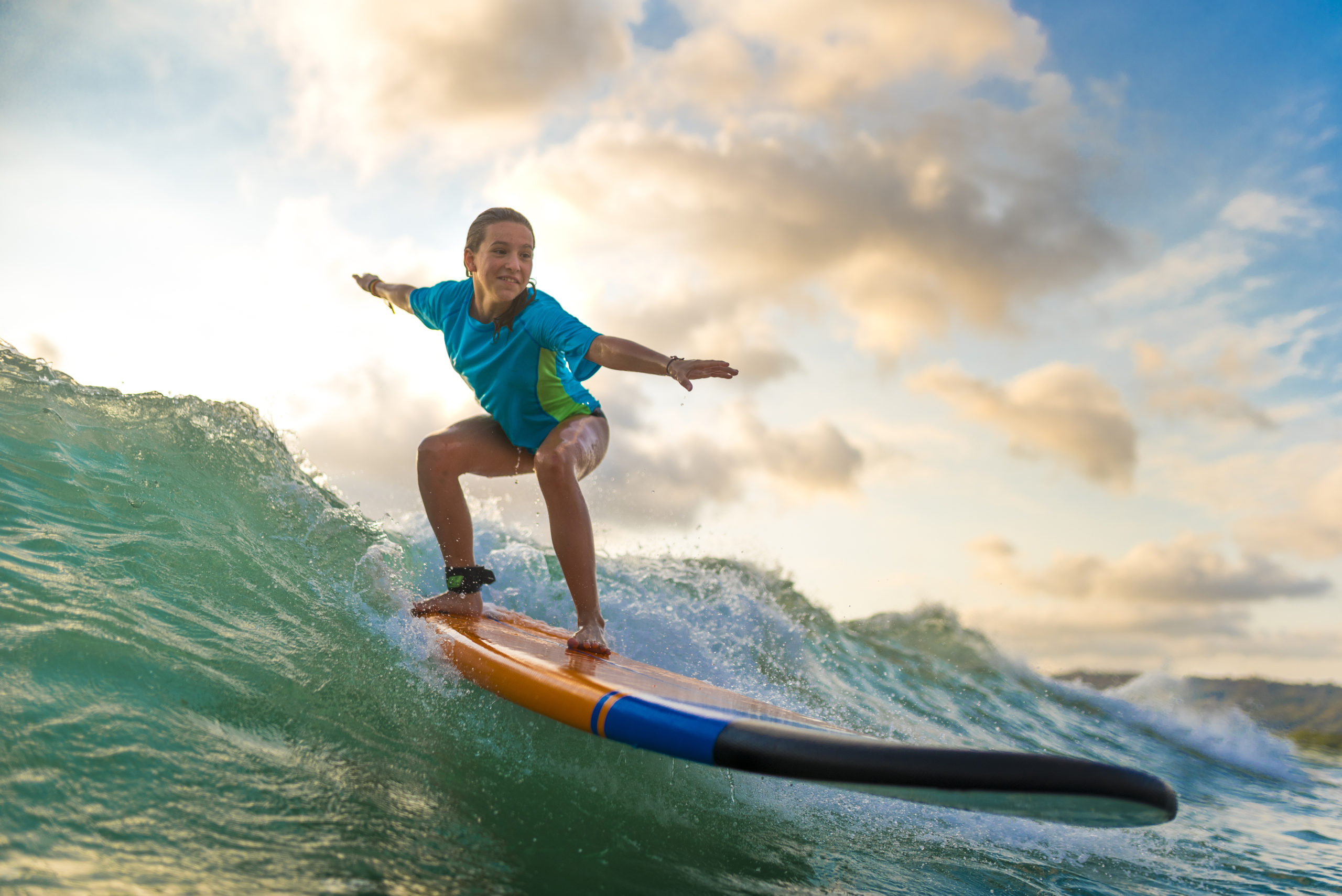Last weekend, I got to try out my super-rusty surfing skills at one of the world’s most famous surfing beaches...and I didn't have travel to Hawaii or California. I went to Long Beach in the Pacific Rim National Park, along the western-most reaches of Vancouver Island, British Columbia. This Pacific Ocean facing beach has consistent surf due to a rocky offshore bar and a direct connection to the stormy weather that gets kicked up in the open water off the coast of Alaska.
After a long day of paddling against the crashing waves, I realized that I had a lot of questions about waves, so I decided to find out all about them in the hopes that I will someday be able to catch one.
How is a great wave made?

According to my research, you need a lot of open water and some strong winds. This combination is what makes beaches along the west coast of North and South America good surfing zones, since the wind and the swells have a lot of time to build up momentum over the vastness of the Pacific Ocean. A wave usually begins thousands of miles off shore because of some windy stormy weather and can take hours to travel to the breaking point.
What actually travels across the ocean? Not water, but energy! The water in a wave actually moves in circular or elliptical paths that swirl all the way down to the ocean floor (see image below of water particle orbits). The water particles stack up on top of each other, creating the swell that we can see coming for us while we wait on our surf boards.

A swell is a peak of potential energy. In order to for this potential to convert into kinetic energy (i.e. make a lot of water actually move forward), the wave needs to break. The "break" happens when the speed of the wave decreases. Swells move closer together, like cars in rush hour traffic, and get higher. The faster moving back of the wave spills over the slower front, causing the classic surfing-wave profile.
The less time it takes for the speed of the wave to be reduced, the more epic the wave. The biggest surfing waves are called Mavericks and can be found off the coast of California, near a place called Half Moon Bay. Maverick waves can top out with 80-foot (23.3 metre) crests (a beginner-sized wave is around 2–4 metres high at the crest)! Only the most ambitious and skilled surfers even dare to take on a Maverick. These massive waves are caused by a rapid reduction of energy instigated by a sudden and drastic change of topography on the ocean floor. Like Long Beach, the deep, open water off the coast of Northern California meets up with the jagged, rocky shoreline which, for the wave’s velocity, is like throwing on the brakes. This causes the wave to crest and break in a barrel roll.
The best surfing waves happen in places where there is a rocky offshore bar, which causes the waves to crest before they break. Without this extra push, the waves would break along the gentle slope of the ocean floor, which is great for wading swimming and floating, but not as great for catching a choka ride.
How does surfing work?

Basically, a surfer paddles out beyond the break—the offshore bar where the waves break—and waits for the perfect swell. When she suspects that a swell is a good size, she starts paddling like mad to try and catch it while it crests and follows it into the break, in the hopes of harnessing the momentum of that enormous wave energy.
If she’s timed it right, the momentum of the wave, and her paddling efforts, will catch the surfboard and carry it along so she can "pop up" to her feet and, balancing on the board, ride the wave to the shore. However, that’s easier said than done, since the hardest lesson to learn as a surfer is how to maintain balance under such complex conditions. Typically, a body achieves balance with only one force at work—gravity. In surfing, gravity is still a problem, but now the surfer has to try and balance despite the forces of gravity and velocity in changing increments.
It’s not easy—take it from me, dudes—I drank a lot of ocean that day and I expect I will be "in the soup" for a while before I can successfully ride a wave from swell to shore in an upright fashion, but until then, I can totally hang loose.
